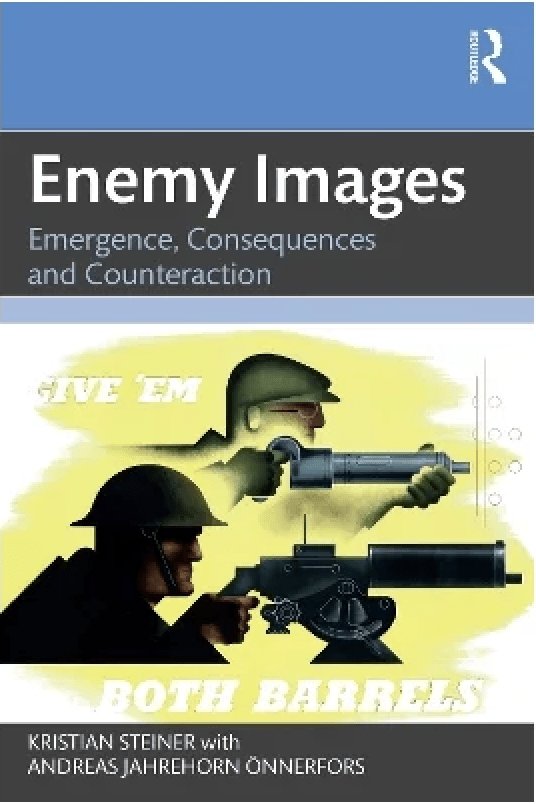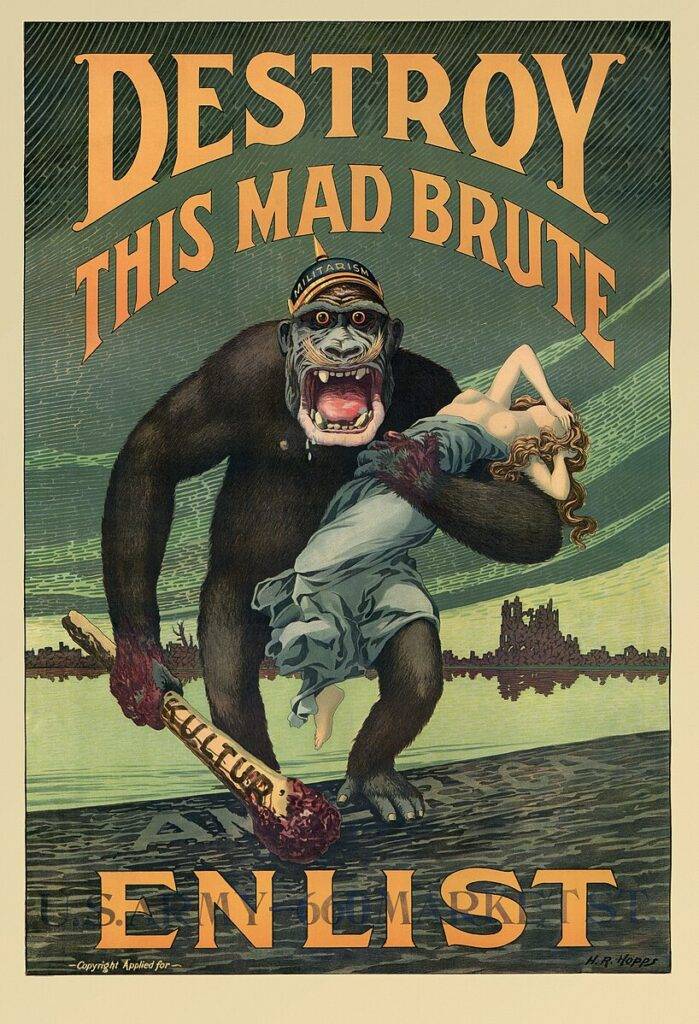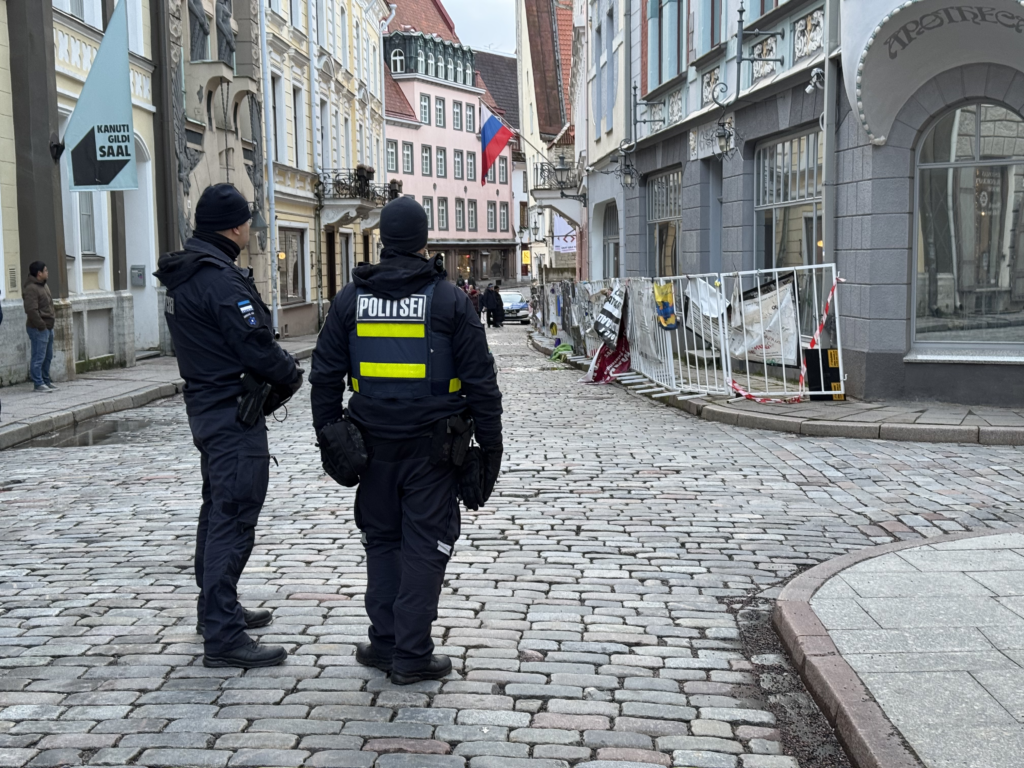
Enemy Images, by Kristian Steiner and Andreas Önnerfors Routledge (2025), delves into the concept of “enemy images” in this timely and critical work. Both Steiner and Önnerfors are respected scholars in political psychology and social conflict studies. The book explores how societies construct adversarial perceptions of groups, individuals, or nations, analyzing their origins, their sociopolitical consequences, and strategies to mitigate their harmful effects.
“Words can be like tiny doses of arsenic: they are swallowed unnoticed, appear to have no effect, and then after a little time the toxic reaction sets in after all”, Victor Klemperer wrote in The Language of the Third Reich.
Enemy Images is divided into three main sections, each corresponding to its subtitle Emergence: How Enemy Images are Created. The first section provides a theoretical foundation, explaining the psychological, historical, and media-driven processes that shape enemy images. Steiner and Önnerfors trace these constructs through various historical periods, from Cold War propaganda to contemporary digital misinformation. They emphasize how cognitive biases, political rhetoric, and cultural narratives contribute to forming stereotypes of the “other.”
The release of this book could not be more timely. In both international politics and across much of the Western world, the escalation of opposing narratives and the sharpening of enemy images are increasing—right now, explosively so. One of the most blatant examples is Putin’s claims that Nazis rule Ukraine. Similar enemy images have also been seen in the West, for example, in the Brexit debate, where the EU was portrayed as a threat to Britain’s independence, and in the rise of right-wing populism in Europe and the United States, where immigrants, globalization, and political opponents have been demonized.

The authors emphasize the role of fear, uncertainty, and historical grievances in enemy image construction. Secondly, the influence of media, particularly social media, in reinforcing divisive narratives. Thirdly, there is the interplay between political actors and public perception in sustaining hostility.
Enemy images make us:
- 1. Tend to remember enemies’ threatening actions more readily than those of non-enemies.
- 2. Evaluate enemy actions as more hostile than similar ones performed by non-enemies.
- 3. Predict future hostile actions from enemies.
- 4. Exaggerate differences between groups and underestimate differences within groups.
- 5. Believe that situational pressures play a minor role in the hostile actions of enemies.
- 6. Believe that situational pressures play a major role in friendly actions by enemies.
- 7. Believe that friendly enemy actions may also be attributed to hostile motives such as desire to deceive or manipulate.
- 8. Judge the credibility of sources of statements attacking enemies less rigorously than they do defending them.

According to the authors, an enemy image as an ideal type has five elements:
- 1. Delimitation of ‘us’ and ‘them’
- 2. Characterization of ‘our’ and ‘their’ essence
- 3. Depictions of ‘their’ threats to ‘our’ assets
- 4. Legitimization of actions to neutralize this threat
- 5. Mobilization of the in-group to take part in actions to neutralize this threat
But what kind of strategies do Putin and other skilled persuaders use? The book suggests six strategies to enhance credibility
- 1. Rationality: Present your argument as rational.
- 2. Inoculation: Incorporate arguments of your opponents and refute them.
- 3. Status: Use symbols of power.
- 4. Altruism: Present your argument as if it is in the interest of the receiver.
- 5. Accuracy: Avoid blatant falsehoods.
- 6. Proofs: Include supporting evidence (a kernel of truth)
Consequences: The Societal and Political Impact of Enemy Images
Steiner and Önnerfors examine further the real-world impact of enemy images, highlighting their role in escalating conflicts, justifying discrimination, and undermining democratic institutions. The authors provide case studies, ranging from ethnic conflicts in the Balkans to the rise of populist nationalism in the 21st century. They point out how enemy images facilitate polarization and authoritarianism. They also underline the impact of dehumanization in justifying war and human rights violations. Lastly, they look into the role of enemy images in reinforcing economic and geopolitical divides.

Enemy images have at least five behaviourial effects, influencing:
- Soldiers’ willingness to kill
- Leaders’ decision-making
- Public behaviour and conduct
- Target groups’ behaviour and conduct
- Future willingness to make and accept peace
While willingness to kill may be crucial for soldiers in conflict situations, there are countless examples of abuse by people in positions of power. Given punitive power, people treat dehumanized individuals more harshly than those who are personalized or are invested with human qualities. The treatment of German Jews in the 1930s, people of Cambodia in the 1970s, ethnic groups in both Rwanda and Yugoslavia in the 1990s, not to mention the abuses by the US military at the Abu Ghraib prison in Iraq in 2003.

Counteraction: Strategies for Reducing Enemy Images
However, Steiner and Önnerfors propose interventions for dismantling enemy images, drawing from peace studies, conflict resolution, and media literacy programs. They advocate for dialogue-based approaches, educational reforms, and the responsible use of digital platforms. They also recommend that we encourage cross-group interactions to reduce stereotypes. Also, promoting media literacy to challenge misinformation is highly recommended. Also, political and diplomatic strategies to de-escalate conflicts should be implemented.
The book’s multidisciplinary approach, blending psychology, history, political science, and media studies, provides a comprehensive understanding of enemy images. The use of real-world examples enhances the book’s accessibility and relevance. The authors’ policy-oriented perspective makes this book particularly useful for policymakers, educators, and journalists.

While the book effectively outlines the problem and potential solutions, some critiques may arise regarding the feasibility of certain counteractions, particularly in authoritarian regimes where controlling narratives is a tool of power. Additionally, more discussion on the role of economic structures in perpetuating enemy images could have strengthened the analysis.
The authors suggest several examples of counter-narrative strategies:
- 1. Counter-stereotypical exemplars, based on countering stereotypes, needs for reconciliation, priming theory, cognitive and intergroup contact theories.
- 2. Persuasion, based on exposing individuals to contradictory evidence about the adversary.
- 3. Inoculation, presenting weaker arguments to foster resilience against stronger arguments.
- 4. Alternative accounts, changing the directionality of the narrative or its impact upon social identity.

For counter-narrative strategies to succeed, it is crucial to understand the cognitive drivers that endorse false beliefs:
- 1. Intuitive thinking, lack of analytical thinking
- 2. Cognitive failures, neglect of sources or knowledge
- 3. Illusory truth, familiarity and cohesion
There are socio-affective drivers, also:
- 1. Source cues: Elite, attractive in-group senders/messengers
- 2. Emotion: Emotive engagement is more effective than persuasion
- 3. Worldview: Personal views, partisanship
Thought-Provoking and Timely
Enemy Images – Emergence, Consequences, and Counteraction is a thought-provoking and timely book that offers both a deep analysis of how adversarial perceptions shape societies and practical solutions to counteract them. Steiner and Önnerfors present a compelling argument for addressing enemy images as a crucial step toward conflict resolution and social cohesion in an increasingly polarized world.
NDR recommends Enemy Images to academics, policymakers, journalists, security and military decision-makers, and anyone interested in understanding and mitigating the divisive forces shaping contemporary global politics.
Read More:
- TaylorFrancis: Enemy Images – Emergence, Consequences, and Counteraction
- Malmö University: Shedding light on propaganda and enemy images


